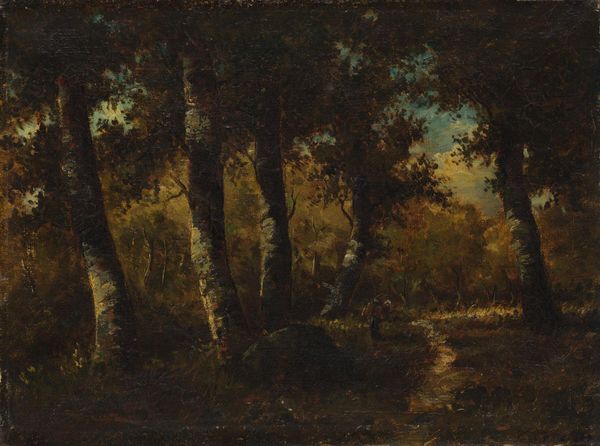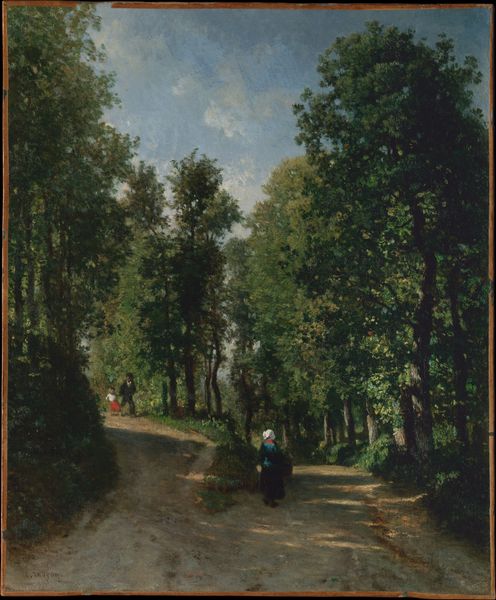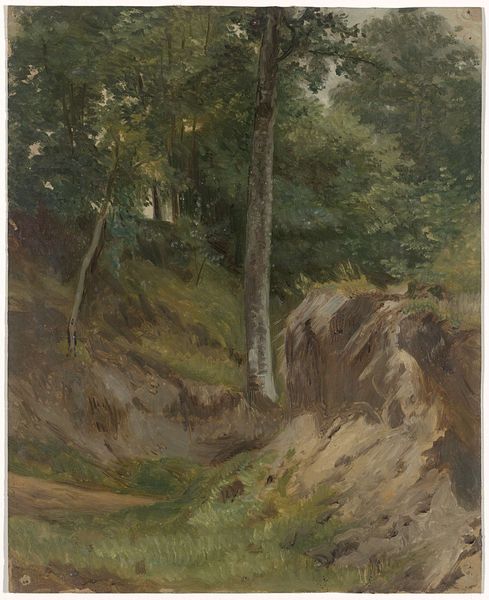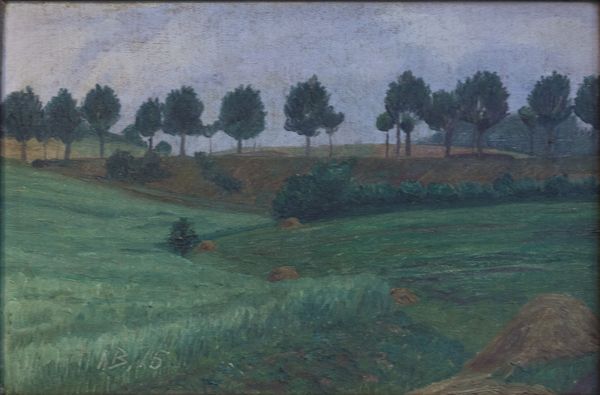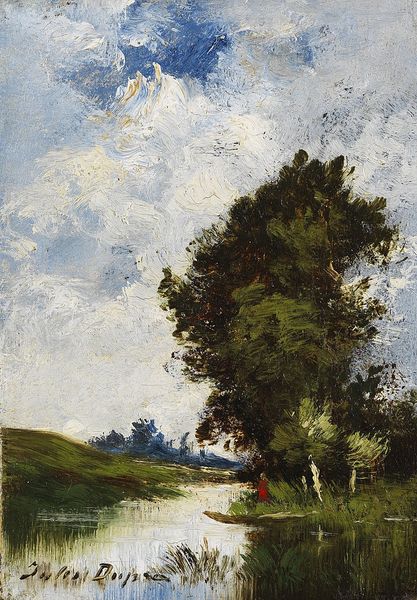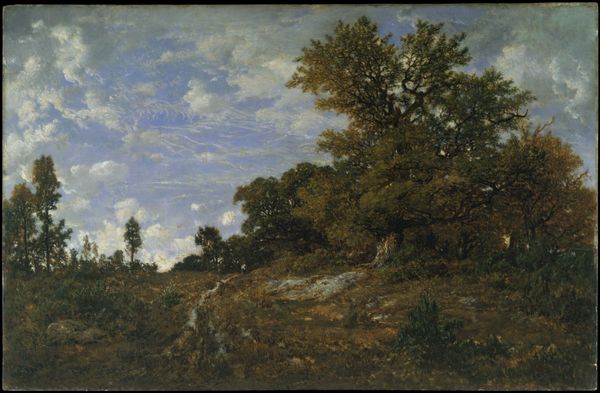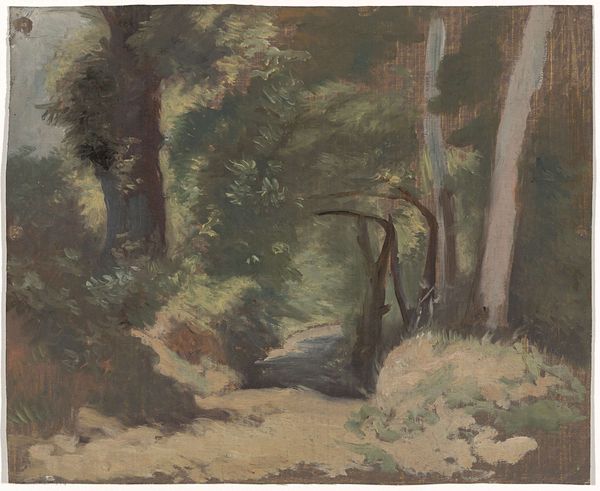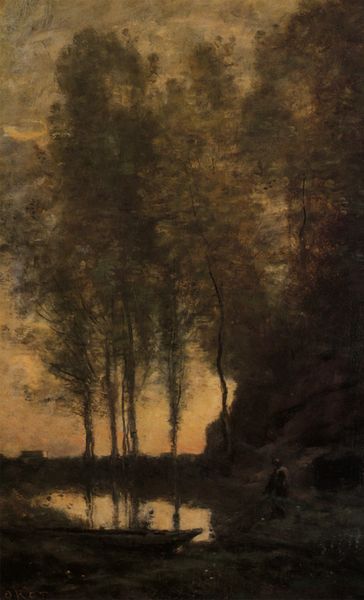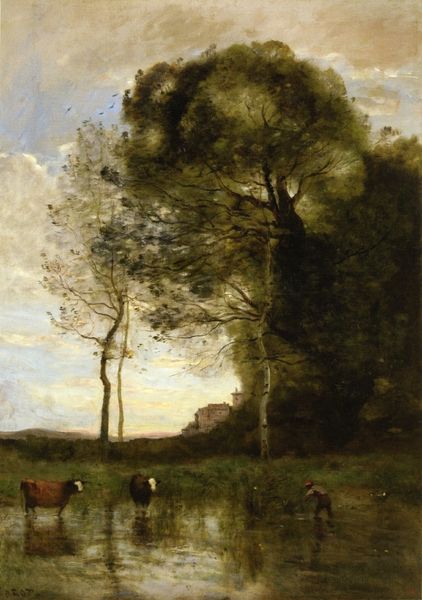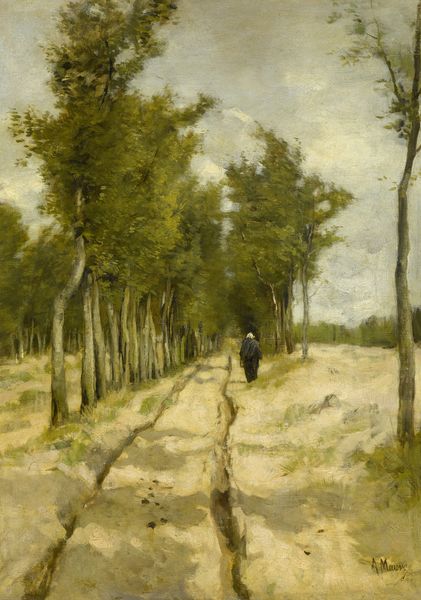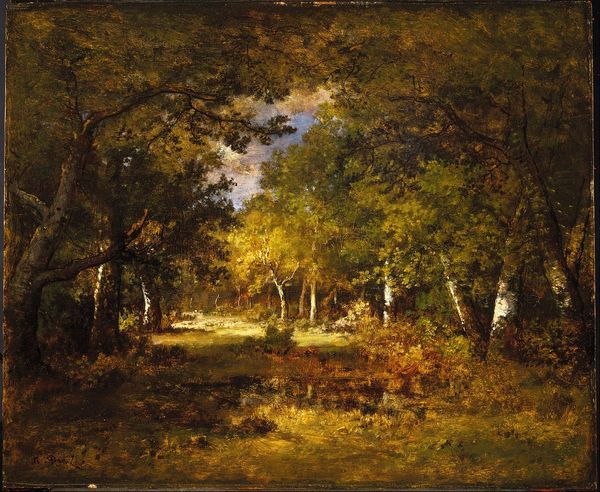
Fir Trees in Les Trembleaux, near Marlotte (Sapins aux Trembleaux à Marlotte) 1854
0:00
0:00
Dimensions: 16 1/4 x 12 5/8 in. (41.3 x 32.1 cm)
Copyright: Public Domain
Editor: Here we have Henri-Joseph Harpignies's "Fir Trees in Les Trembleaux, near Marlotte," painted in 1854. It’s an oil painting showing a path through a forest, and what immediately strikes me is how calm and peaceful it feels, despite the rather somber color palette. What stands out to you in this piece? Curator: What’s striking is the artist's engagement with the Barbizon School's ideals and its challenge to academic landscape painting. The Barbizon painters sought to represent nature directly, *en plein air,* moving away from idealized scenes towards depictions of the everyday. Look at how the light falls—is this an accurate reflection, or constructed according to specific sociopolitical forces? Editor: It feels quite accurate to me, like a snapshot of a real place. How would those socio-political forces influence his choices? Curator: Well, consider that landscape painting in this era was often tied to national identity. The Romantics saw in landscapes a way to evoke patriotic feelings. Here, Harpignies seems more interested in capturing the experience of being *in* nature, of a natural world that might be available to all people. What do you notice about the figures on the path? Editor: They look like a father and child. The father has a fishing pole and the child is carrying something. They are placed almost incidentally along the path. Curator: Exactly. They aren’t heroic figures dominating the landscape, are they? Rather, they blend in. It’s a very different message than many academic paintings of the time, suggesting perhaps a changing society where ordinary people could claim a stake in the national landscape and imagine leisure as a right. Editor: That's fascinating, it shifts how I see the painting. What I thought was a simple nature scene is now imbued with questions about society and who has access to beauty and leisure. Curator: Indeed, by moving painting out of the studio and into the forest, artists like Harpignies played a role in shaping how we understand nature and its place in the modern world.
Comments
No comments
Be the first to comment and join the conversation on the ultimate creative platform.
